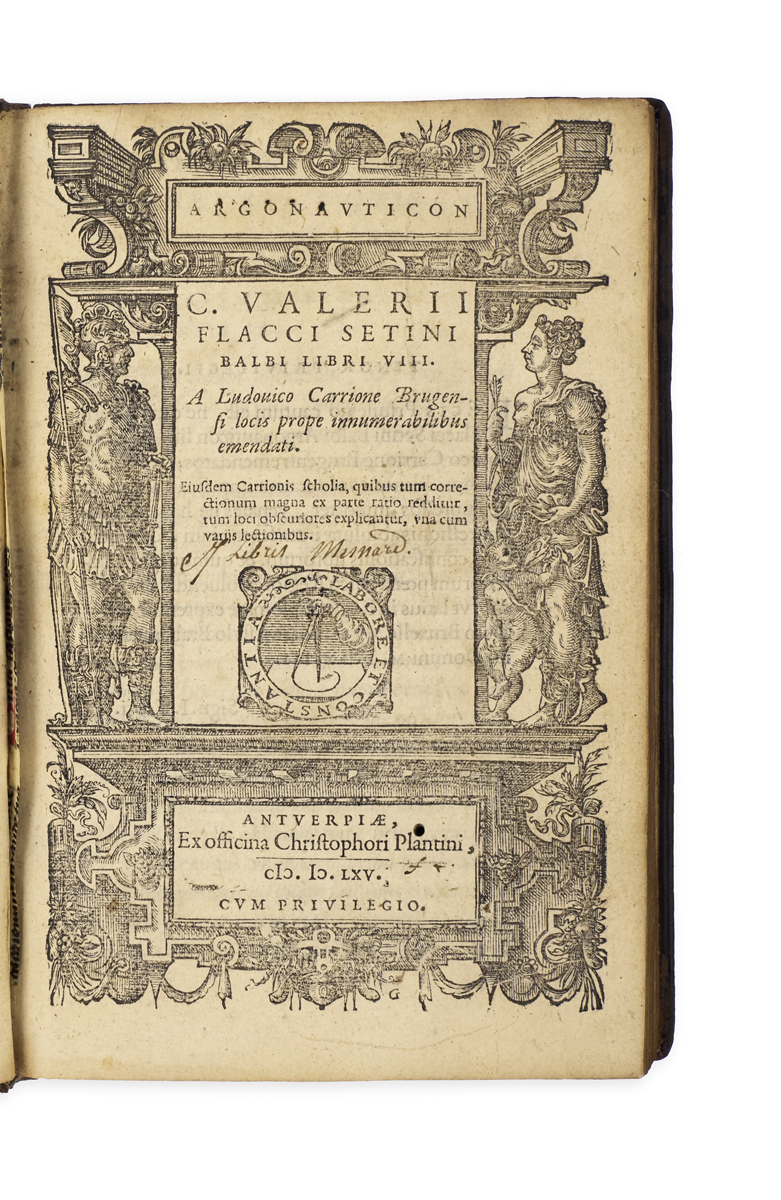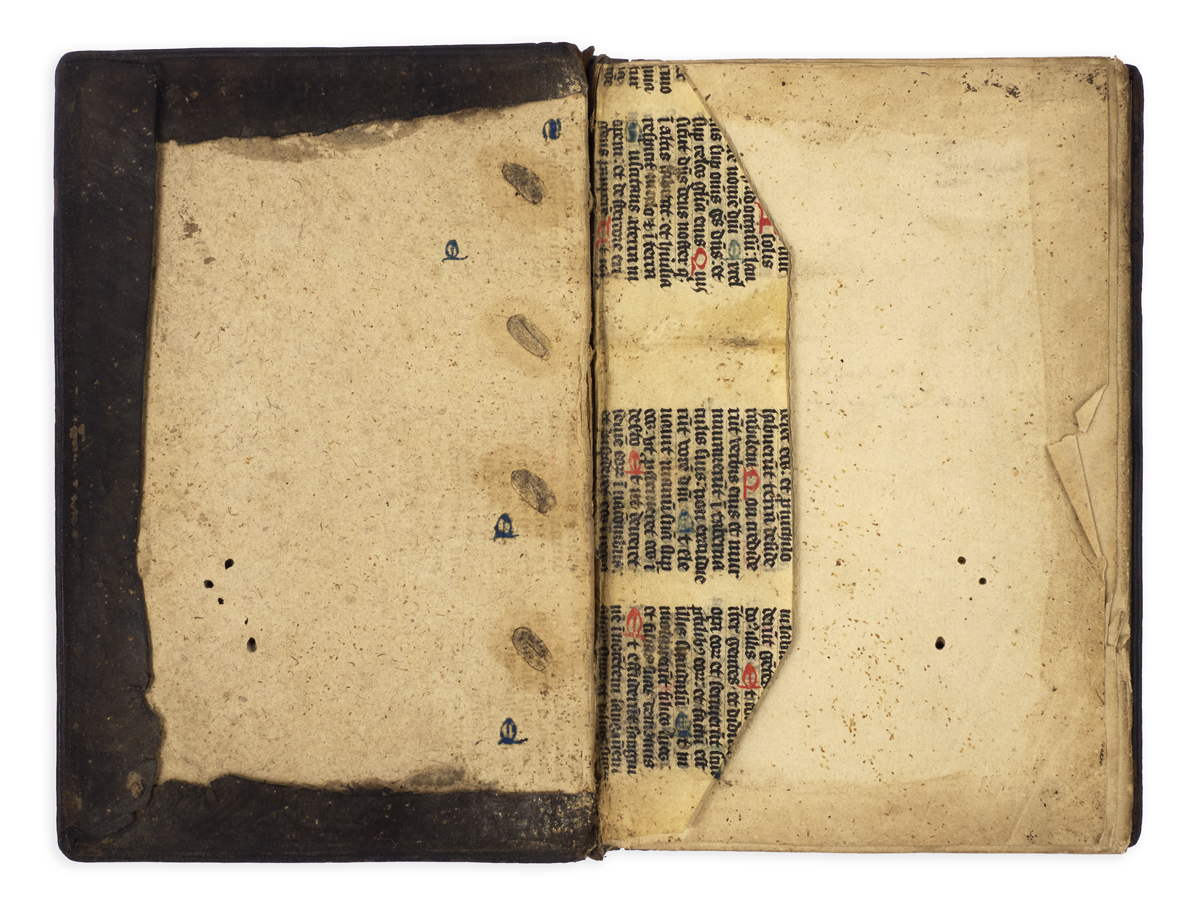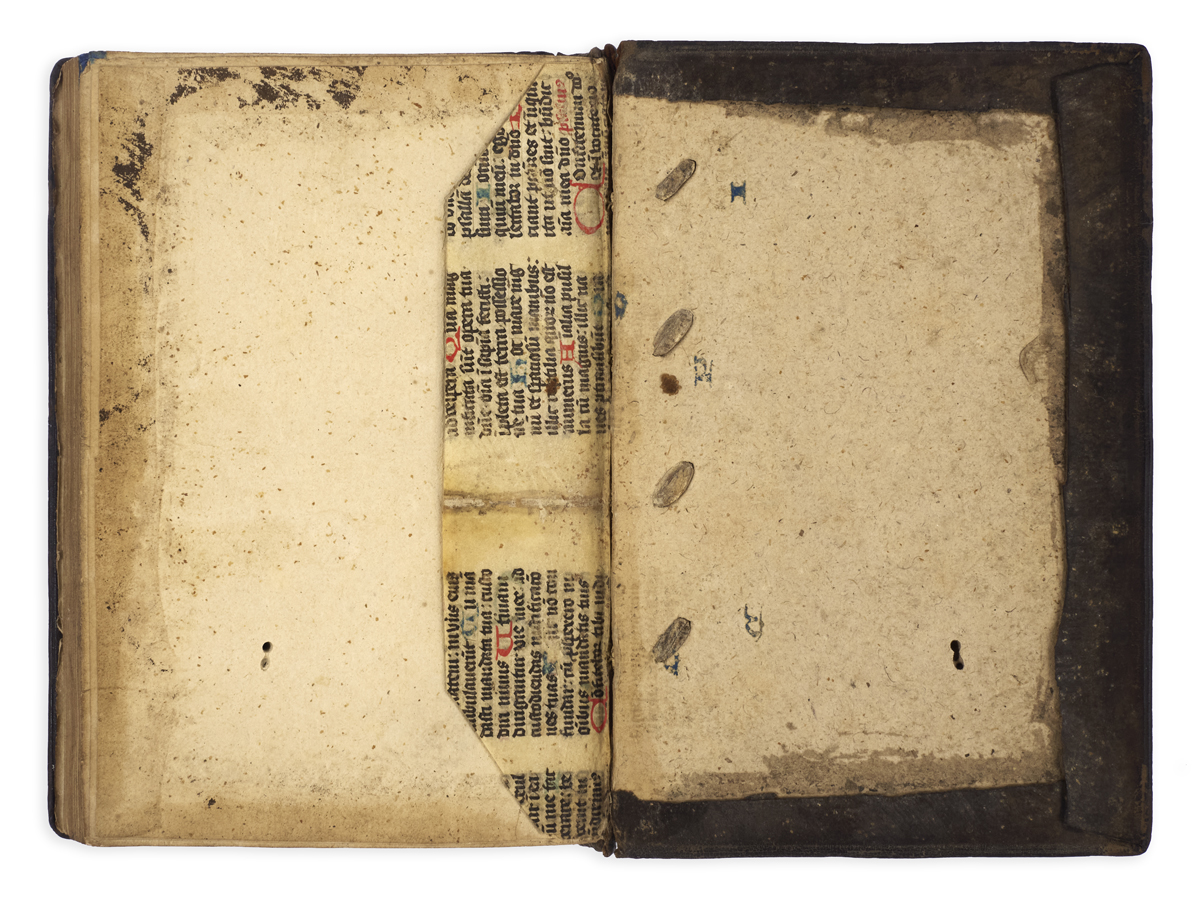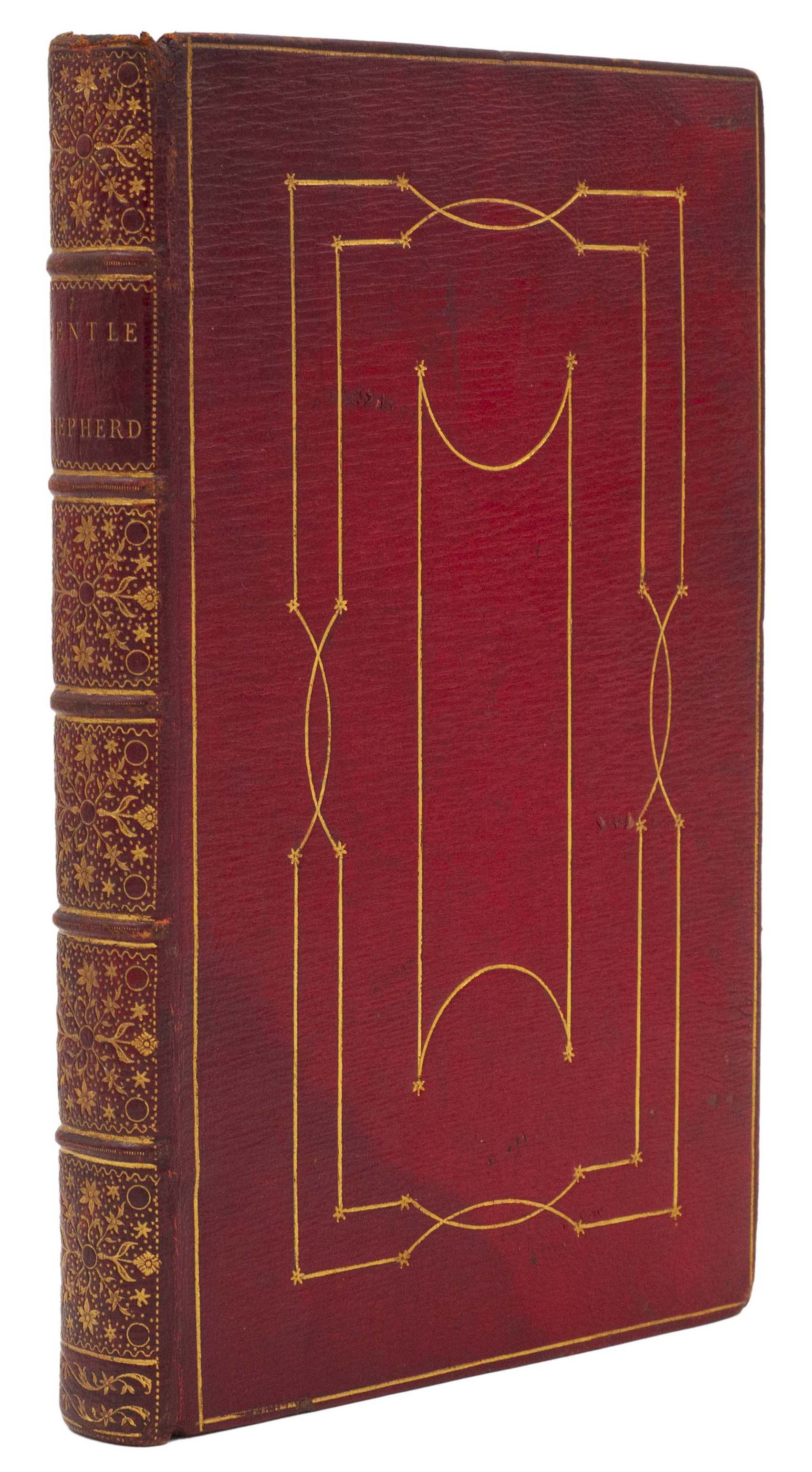



VALERIUS FLACCUS, Gaius.
Argonauticon … libri VIII, a Ludovico Carrione Brugensi locis prope innumerabilibus emendati, ejusdem Carrionis scholia … una cum variis lectionibus.
Antwerp, Christopher Plantin, [15 July] 1565.
8vo, pp. 303, [1]; title printed within woodcut border with woodcut Plantin device; single wormhole throughout (not affecting legibility), small ink stain to upper outer corner of final leaves; an excellent copy in contemporary (Dutch?) calf over couchboard, endguards of manuscript waste (see below), sewn on 4 split tawed thongs laced in, with kettlebands; a little rubbed, short cracks to foot of each joint; seventeenth-century ink inscription ‘Ex Libris Mesnard’ to title.

Added to your basket:
Argonauticon … libri VIII, a Ludovico Carrione Brugensi locis prope innumerabilibus emendati, ejusdem Carrionis scholia … una cum variis lectionibus.
First edition, a very attractive copy, of Louis Carrio’s precocious – and perhaps overconfident – recension of the first-century Argonautica of Valerius Flaccus.
Valerius Flaccus’s Argonautica, a Latin imitation of Apollonius of Rhodes’s telling of the quest for the Golden Fleece dedicated to Vespasian on his departure to conquer Britain, was unknown until the discovery of a partial manuscript at St Gall in 1417; it was first printed in Bologna in 1474, but despite editions by Giunta (1503), Badius Ascensius (1517), Jean Petit (1519), and the heirs of Aldus (1523) remained in an incomplete and incorrect state.
Louis Carrio (1547–1595), aged only eighteen at the time of publication, prepared his edition both from previous printed versions and ‘from an ancient manuscript codex, which the most weighty judgements of many men have confirmed to have been written six hundred years ago’ (p. 188 trans.). In addition to adding the many scholia, Carrio claims to have corrected the text in over six hundred places in a campaign of enthusiastic editing praised by some commentators but condemned by others as overzealous.
Plantin’s records show that printing was paused in November 1564 after quire L, likely because of errors introduced to the text while Carrio was absent visiting Italy, and only resumed in June 1565 when the scholar returned (see Voet). A revised edition was published in sextodecimo the following year, without the scholia but joined instead by a volume of Castigationes.
Manuscript waste: bound with endguards of two fragments from a fifteenth-century northern-European (Netherlandish?) portable breviary in double columns.
Adams V-80; Dibdin, Introduction II, p. 515 (‘There is no editor of this writer, who, since Baptista Pius, has deserved more the thanks of the classical world than Carrio’); Graesse VI, p. 241 (‘le texte a été corrigé sur un ancient et très bon man. et sur des édd. antérieures, mais avec trop de hardiesse et de violence’); Voet 2408.

